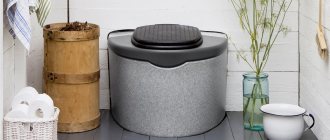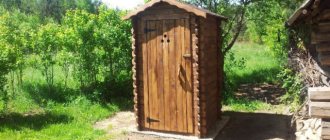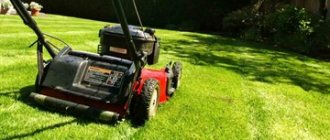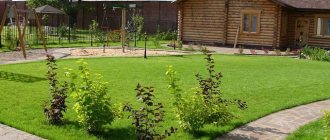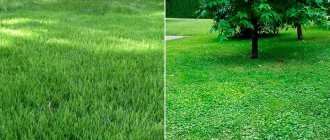Review author: Terrari School of Design
The lawn on the site can serve different functions, for example, you can arrange a barbecue area, sports or children's playground here. Depending on the purpose, a certain load is placed on the green cover, and this is what you should rely on when choosing vegetation for your site.
Next, we will look at the variety of grasses for the lawn along with a photo and provide recommendations regarding planting.
The best lawn grass for a summer residence
Lawn grass for a summer residence, due to the many types and varieties, is selected based on the adaptation of the seeds to the temperate climate of our country. Among mixtures of lawn grasses, the following varieties should predominate:
- Thin bentgrass;
- Meadow bluegrass;
- Red fescue.
The best lawn grass for a summer residence is one that crowds out weeds and does not require maintenance. However, let’s immediately dispel the myth that a lawn can be planted and forgotten. Lawn grass in the country requires proper attention and care along with other plant crops. The best lawn is the one that was sown correctly and on time and did not forget to care for it. Reviews about the best lawn grass for a summer residence are mixed and vary among amateur gardeners. Some praise sports turf, others praise Canadagreen, and you can also often hear good reviews about mixtures of Lilliput and emerald. Apparently it depends on the soil and care characteristics.
But there are basic criteria that you must pay attention to when choosing seeds for your lawn:
- frost resistance;
- resistance to trampling;
- grass mixtures should displace weeds;
- short stature;
- good drought tolerance.
Although today literally all manufacturers are full of flashy advertising tricks. But according to a survey of experts, the quality of the lawn depends not so much on the price of the purchased seed mixture, but on the preparation, fertilization and leveling of the soil for the lawn, as well as on proper timely care in the future.
Reviews from gardeners
In a variety of reviews about the “Universal” mixture they write the following:
- good lawn for a reasonable fee;
- the grass does not grow quickly, there is no need to mow it often, there is a children's playground in the garden, the lawn is in decent condition - we are happy with it;
- an effective cover for a country flower garden, the dog is walking, but the grass is not wrinkled;
- covers unsightly areas in the garden;
- looks great mixed with flower plantings at the façade of the cottage.
If gardeners follow the recommendations for sowing and care, then all the reviews are positive . There are rarely complaints that the grass has not sprouted well, but it is not indicated whether the ratio of the number of seeds per 1 m2 during sowing and timely watering and drainage were observed.
You can read reviews from gardeners about the “Universal” mixture here.
When to plant lawn grass at the dacha
Lawn grass in the country will take root best if it is planted in April or early September. When planting a lawn in the spring, remember that the seeds need rest and must sprout. You should not walk on the lawn for several weeks; you should allow the seeds to take root properly to avoid bald spots. And when you sow a bentgrass lawn, you should completely avoid trampling during the first year of life, otherwise the lawn will grow unevenly.
In the fall, when it comes time to sow lawn grass at the dacha, be sure to sow varieties that are resistant to frost and windy weather. For example, the Ryegrass variety is more heat-loving compared to Fescue. After the snow melts, voids and bald spots are found on the lawn grass of heat-loving varieties. However, in favorable weather, the same Ryegrass retains the lush greenness of the grass right up to December.
Care
Growing lawn grass is very easy.
Basic care activities include performing activities such as:
- watering;
- fertilization;
- regular haircut.
If you follow all the requirements, the lawn will always look good. In addition, the correct approach to cultivation ensures the durability of the coating and eliminates the need for constant treatments against diseases and pests, since most fertilizers play the role of not only nourishing the soil, but also as preventive measures against various ailments.
How to plant lawn grass at the dacha
Do-it-yourself beautiful and smooth lawn grass at your dacha is not uncommon. Let's take a step-by-step look at how to sow lawn grass in your dacha.
Step 1: Preparing the soil
We prepare for the initial sowing of the lawn one and a half to two months in advance: we clear the soil of debris, stones, branches, etc., remove weeds with rhizomes, remove all plant residues from the soil, you can use chemicals for this. We dig up the ground (enough for a spade bayonet), enrich the soil with fertilizers - add compost. At the final stage of preparing the soil for lawn grass, we level it with a rake and compact it (compact it) with a roller or simply trample the soil.
Step 2. Sowing lawn grass
The main difficulty is behind us, let’s move on to the most enjoyable and responsible activity – planting a lawn.
There are several ways to sow lawn grass at your dacha.
It is better to sow small seeds in calm weather to prevent voids. For convenience, planting material is mixed with sawdust 1:10 and evenly scattered on the ground, and then the whole thing is leveled with a small rake.
It is very convenient to sow a lawn with a special machine, but not everyone has this opportunity. It is best to sow the lawn thicker than the manufacturer recommends, at the rate of 50-60 grams per 1 sq.m.
Another option for sowing a lawn with your own hands is to mix lawn seeds with sand and humus and scatter the mixture over the area in two opposite directions. Nowadays, the so-called liquid lawn is becoming increasingly popular. It is a mixture of seeds with fertilizer, liquid granules and green dye. You can prepare liquid lawn yourself by preparing a liquid mixture with seeds. The dye is added only to see the uniformity of the liquid spray.
You can buy ready-made liquid lawn. However, gardeners often remain deceived and overpay large sums, but in fact receive an incomprehensible mixture of low quality. Therefore, when choosing a liquid lawn, pay attention to the manufacturer, buy only from trusted sites, and read reviews.
Rolled lawn is also sold - these are already sprouted seeds. The rolls are laid on the prepared soil and then cared for, just like a regular lawn.
Step 3. Lawn grass seeds take root
After sowing, the lawn should be watered by irrigation using a shallow watering can to prevent the lawn seeds from being washed away. To protect against birds that are not averse to eating lawn seeds, you can cover the lawn with a lightweight geofabric. But this does not always work out when sowing large areas with lawn. Until the lawn has matured and become stronger, it is better not to walk on it, at least for the first month, and it is advisable not to trample it during the first year so that the lawn can take root properly.
Manufacturers and their prices in the Russian Federation
The universal lawn mixture can be freely purchased at specialized retail outlets from domestic or foreign manufacturers:
LLC "Agroni" (Russia)
A mixture of universal use, standard composition, excellent germination. The cutting height is 3-4 cm; for planting per 1 m2 you will need 50 g. Perennial grass is recommended for sunny areas, planting May-September . Cost for 1 kg from 253 rubles, for 300 g. – 75.80 rub.
DLF (Denmark)
Universal Playground mixture for lawns of any purpose. One of the best manufacturers in Europe guarantees high-quality planting material. Standard formula composition, suitable for children, environmentally friendly, does not cause allergies. Price for 1 kg from 360-400 rubles, package of 20 kg – 6,650 rubles.
Hallo Gras (Russia)
A mixture for quickly creating a spectacular and thick lawn in any place and area. It grows in shaded and sunny areas and will provide green and dense cover in a few days . Standard composition, cost from 722 rubles. for 1 kg.
The cost of the Universal mixture in Russia increases with distance from the central region. In the middle zone you can purchase this lawn mixture (depending on the variety and country of origin) from 200 rubles. up to 800 rub. for 1 kg, in remote areas - from 450 rubles. up to 1500 rub. and more for 1 kg. The larger the packaging, the cheaper the price per 1 kg. Packaging available: 100 g, 300 g, 1 kg, 3.5 kg, 6 and 7 kg, 15 kg and 20 kg.
Lawn for the lazy
We often hear that there is a lawn for the lazy – one that requires no maintenance. However, this is a myth. The so-called lazy lawn, according to reviews, requires the same effort as a regular lawn. But if the first stage of soil preparation is carried out carefully, then the load on the gardener when caring for the lawn is reduced significantly.
One such concept, a DIY lawn for the lazy, tells us that we want to plant and forget. These marketing gimmicks with names are designed to attract buyers. Indeed, there are low-growing lawn varieties that are characterized by slow growth - they need to be mowed less often; There are types of grasses that can withstand drought and therefore do not require watering.
However, it is difficult to call people who take care of the lawn lazy. Except for those who bought artificial turf. But even non-living plastic grass, which costs many times more than lawn seeds, collects dust and requires cleaning and loses its attractiveness over time. Do-it-yourself lawn at the dacha for the lazy – this is how the Lilliputian variety is often called. This is a low-growing lawn grass seed mixture. But it also requires careful care, like all other plants. It’s just that for some this leaving is a joy, but for others it’s a burden.
Conclusion: a lawn for the lazy is waist-deep grass mixed with weeds. If you see a flat area with small green grass, rest assured that the owner of the lawn has done significant preparatory work to obtain the result and monitors his green living carpet every year.
Peculiarities
The main secret of the mixture is that the breeders selected the average composition of various perennial grasses , which can easily grow on any soil and are suitable for any use, which is confirmed by the name “Universal Mixture”.
This option is intended not only for decorating the lawn near a cottage or garden plot, but also for constant mechanical impact.
How to properly care for your lawn
Any lawn requires care. It is very important to acquire specialized equipment for mowing the lawn. It is better to immediately purchase high-quality garden equipment that will serve you for many years. Trim the grass with lawn mowers, and in hard-to-reach places with trimmers. A wide range of high-quality Japanese and European garden tools at affordable prices can be viewed on the website: https://japan-power.ru/.
The first mowing of lawn grass should be done when it grows 8-10 cm. You should not cut the grass too low, you need to let it get used to the new place. In the first year, don’t expect thick greenery, but you should mow the lawn regularly, once every 10 days, or even more often. First, the grass is mowed to a height of 4-5 cm, and in subsequent years it can be mowed to a height of 3 cm. The more often you mow the lawn grass, the thicker it becomes, its root system strengthens, grows and prevents weeds from sprouting.
In May-June, the lawn grass is very lush and it is more difficult to mow than at the end of summer. But this is the time to strengthen the roots, otherwise, if you miss mowing, the grass will bloom and become tough.
Do-it-yourself lawn – 5 life hacks
Secrets of professional gardeners that can be useful to every summer resident:
- If there is stagnation of moisture in the area, then when preparing the soil for lawn grass, a drainage layer of crushed stone and gravel should be laid to a depth of 40 cm.
- If you are against removing weeds with chemicals, but you don’t want to pull out every root, remove the top layer of soil (10 cm) and add fertile soil.
- To sow lawn grass evenly, divide the ground into small squares and sow each one in turn.
- In the fall, be sure to feed the soil with fertilizers, so every year the grass will feel better and better.
- If you notice weeds or bald patches on the lawn, dig up this area, remove all excess and replant with more lawn grass.
Types of herbal mixtures
There are several classifications of grass mixtures. Most often they are divided into:
- fast-growing (have strong tillering of grass mixtures, ensures good density of the lawn and rapid recovery of bald spots);
- solar (grass mixtures have a high degree of resistance to drying and fading under the influence of bright sun and high temperatures);
- shady (intended for planting in shaded areas);
- universal (grass mixtures that are undemanding to location and growing conditions).
Unlike wild grasses and some monocultures, grass mixtures are collected from plant seeds characterized by good germination. Herbs in mixtures are selected taking into account their advantages and disadvantages. The recipe for each lawn mixture is carefully worked out. They are also distinguished by purpose and growing conditions.



